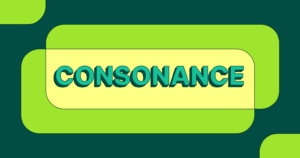Discovering the Elements of Poetry: A Simple Guide for Young Readers

The elements of poetry are like the building blocks that make poems special and unique. When we talk about the elements of poetry, we’re talking about things like rhyme, rhythm, and imagery that help bring poems to life. These elements are what make poems different from stories or songs.
Understanding the elements of poetry can be fun and exciting. Imagine a poem as a puzzle where each piece, or element, fits together to create a beautiful picture. By learning about these elements, you can start to see how poets use them to express feelings and ideas in creative ways.
What Are the Elements of Poetry?
The elements of poetry are special tools that poets use to make their poems interesting and fun. These tools include rhyme, rhythm, and imagery. Each one helps to create a unique feeling in the poem.
Rhyme is when words at the end of lines sound the same. For example, “cat” and “hat” rhyme. This makes the poem sound musical and catchy. Rhythm is like the beat in a song. It’s the pattern of sounds that makes a poem flow smoothly.
Imagery is another important tool. It helps create pictures in your mind by using descriptive words. For example, instead of saying “the sky was blue,” a poet might write “the sky was a vast, bright blue blanket.” This helps you imagine the scene better.
These tools work together to make poems enjoyable. By looking for rhyme, rhythm, and imagery, you can see how poets use these parts to bring their words to life.
Rhyme and Rhythm: Key Parts of a Poem
Rhyme and rhythm are key parts of poetry that make poems sound musical. Rhyme happens when words at the end of lines have similar sounds, elements of poetry like “moon” and “spoon.” This makes the poem catchy and easy to remember.
Rhythm is like the beat in a song. It’s the pattern of stressed and unstressed sounds in a poem. Poets use rhythm to create a flow elements of poetry or movement in their writing. It helps set the mood and makes the poem more enjoyable to read aloud.
Together, rhyme and rhythm make poems more interesting. Rhyme adds a playful touch, while rhythm provides a steady beat. By focusing on these elements, you can better appreciate how poets craft their work.
Imagery: Seeing the World Through Poems
Imagery is a special tool poets use to create vivid pictures in your mind. When a poet uses imagery, they describe things in a way that makes you see, hear, or feel what they are elements of poetry talking about. This makes their poems come alive.
For example, instead of just saying “the garden was pretty,” a poet might write “the garden was filled with colorful flowers and the sweet smell of roses.” This description helps you picture the garden more clearly.
Imagery helps you connect with the poem on a deeper level. When you read a poem, look for these descriptive details. They make the poem more engaging and help you understand the poet’s message better.
Understanding Metaphors and Similes
Metaphors and similes are ways poets make their writing more interesting. They help create comparisons that make the poem’s meaning clearer. A metaphor says one thing is another, like “time is a thief,” showing how time takes away moments quickly.
A simile compares two things using “like” or “as,” such as “her smile was like sunshine.” This helps you understand how warm and bright her smile is. Both metaphors and similes add extra meaning to the poem.
Looking for these comparisons can help you understand the poem better. They make the language richer and give you more to think about. By recognizing metaphors and similes, you can enjoy and interpret poems more deeply.
How Sound Devices Shape Poems
Sound devices are important tools that poets use to make their poems interesting and musical. These include alliteration, assonance, and onomatopoeia. They help to create a certain sound and feel in the poem, making it more enjoyable to read.
Alliteration is when the same sound is repeated at the beginning of several words, like “Peter Piper picked a peck of pickled peppers.” This repetition makes the poem catchy and fun to say. Assonance is similar but involves repeating vowel sounds, like “hear the mellow wedding bells.” This adds a musical quality to the poem.
Onomatopoeia is when words imitate natural sounds, like “buzz” for a bee or “clang” for a bell. These sounds help bring the poem to life and make it more vivid. By paying attention to these sound devices, you can see how poets use them to enhance their writing.
The Role of Consonance in Poems

Consonance is a sound device used in poetry that involves repeating the same consonant sound in close succession. This can be heard in phrases like “tick-tock” or “pitter-patter.” Consonance helps to create a rhythm and musicality in the poem.
Unlike alliteration, which focuses on the beginning of words, consonance happens at any part of the word, often at the end. For example, in the phrase “the lumpy, bumpy road,” the “m” sound is repeated, adding a rhythmic quality to the poem.
Poets use consonance to make their poems more engaging and memorable. It adds a subtle texture to the language that can enhance the overall mood or tone. By noticing consonance, you can appreciate how poets craft their work to create a certain effect.
How Meter Adds a Musical Touch
Meter is an important part of poetry that refers to the pattern of stressed and unstressed syllables in a line. It’s like the beat or rhythm that helps give the poem a musical quality. Meter can make a poem sound regular and structured.
In many poems, meter follows a specific pattern, such as iambic pentameter, where each line has ten syllables with a pattern of unstressed and stressed syllables. This creates a steady rhythm that can make the poem feel more musical and harmonious.
Meter helps to create a flow in the poem, guiding how it is read and understood. It can add a sense of order and balance. By paying attention to the meter, you can see how poets use rhythm to enhance the feeling of their poems.
Exploring Free Verse and Structured Forms
Free verse and structured forms are two different ways poets write their poems. Free verse does not follow a specific pattern or structure, giving poets freedom to write in a more relaxed and personal way. Poems in free verse can vary in length and do not need to rhyme.
Structured forms, on the other hand, follow specific rules and patterns. For example, a sonnet has 14 lines with a particular rhyme scheme. Haikus are short poems with a 5-7-5 syllable pattern. These forms give poems a clear structure and rhythm.
Both free verse and structured forms have their own unique qualities. Free verse offers creative freedom, while structured forms provide a framework for poets to follow. By exploring both types, you can appreciate the different ways poetry can be crafted.
The Importance of Form in Poetry
The form of a poem refers to its overall structure and how it is arranged on the page. This includes elements like the number of lines, stanzas, and the pattern of rhyme and rhythm. The form helps to shape how the poem looks and sounds.
For example, a sonnet has 14 lines and a specific rhyme scheme, while a limerick has five lines with a distinctive rhythm and rhyme pattern. Each form has its own set of rules that influence how the poem is written and read.
The form can enhance the meaning of a poem and add to its emotional impact. By paying attention to the form, you can see how poets use structure to support their themes and ideas. It’s an important aspect of poetry that helps to create a cohesive and engaging piece.
Using Similes and Metaphors in Poems
Similes and metaphors are powerful tools in poetry that help make comparisons and add depth to the writing. A simile uses “like” or “as” to compare one thing to another, making the description more vivid. For example, saying “her laughter was like music” helps you imagine the sound and feel of her laughter.
Metaphors, on the other hand, do not use “like” or “as.” Instead, they say something is something else to create a strong image or idea. For instance, “the classroom was a zoo” means it was very noisy and chaotic. Both similes and metaphors make poems more interesting and elements of poetry expressive by adding layers of meaning.
By recognizing these comparisons, you can better understand the emotions and ideas the poet is trying to convey. They help to paint a clearer picture in your mind and make the poem more engaging. Look for these tools when reading poetry to see how they enhance the writing.
How Poets Use Tone to Convey Emotion
Tone is the attitude or feeling that a poem conveys through its language and style. It can be happy, sad, serious, playful, or any other emotion. Poets use tone to connect with the elements of poetry reader and to express their own feelings about the subject of the poem.
For example, a poem with a joyful tone might use bright and cheerful words, while a poem with a somber tone might use darker and more serious language. elements of poetry The tone helps set the mood of the poem and can influence how you feel as you read it.
Understanding the tone of a poem can give you insight into its overall message and theme. By paying attention to the tone, you can better appreciate the poet’s intent and how they elements of poetry use language to create a specific emotional impact.
The Role of Imagery in Bringing Poems to Life

Imagery is a technique that poets use to create detailed and vivid pictures in your mind. By using descriptive language that appeals to your senses, poets make their elements of poetry poems more engaging and real. Imagery helps you see, hear, smell, and feel what the poet is elements of poetry describing.
For example, instead of simply saying “the forest was quiet,” a poet might describe “the forest whispered with the soft rustling of leaves.” This detailed description helps you imagine the scene more clearly and makes the poem come alive.
When reading poetry, look for imagery to see how the poet uses elements of poetry words to paint a picture. It can help you connect more deeply with the poem and understand elements of poetry its meaning better. Imagery is a key part of what makes poetry rich and immersive.
The Impact of Symbolism in Poems
Symbolism is when poets use symbols to represent larger ideas or concepts. A symbol is a word or object that stands for something beyond its literal meaning. For instance, a rose might symbolize love or beauty. Poets use symbols to add layers of meaning to their poems.
By using symbolism, poets can convey complex ideas in a elements of poetry simple way. A single symbol can carry a lot of significance and help to deepen the reader’s understanding of the poem. For example, a storm in a poem might symbolize turmoil or conflict.
Recognizing symbols in a poem can help you uncover its deeper meanings. It’s like finding hidden messages that the poet wants you to discover. Symbolism adds richness elements of poetry and depth to poetry, making it more intriguing and thought-provoking.
Exploring the Use of Irony in Poetry
Irony is a literary device that poets use to create a contrast between what is expected and what actually happens. It can add humor, surprise, or a deeper meaning to a poem. elements of poetry For example, if a poem describes a sunny day but reveals a character feeling sad, that’s an example of irony.
There are different types of irony, such as verbal irony, where the poet says one thing but means another. Situational irony occurs when there is a discrepancy between what is expected and what actually happens. Both types can make a poem more engaging and thought-provoking.
Understanding irony in poetry can help elements of poetry you appreciate the poet’s use of contrast and surprise. It can also provide insight into the poem’s themes and messages. By looking for irony, you can see how poets play with expectations to create a more compelling experience.
Conclusion
In conclusion, understanding the elements of poetry can make reading and writing poems more fun and exciting. By learning about rhyme, rhythm, imagery, and other tools, you can see how poets use these special tricks to create beautiful and meaningful poems. Each element adds something unique, making every poem a special experience.
So, next time you read a poem, look out for these elements. Notice how rhyme makes the poem catchy, how imagery paints pictures in your mind, and how tone sets the mood. With these tips, you’ll be able to enjoy and appreciate poetry even more




